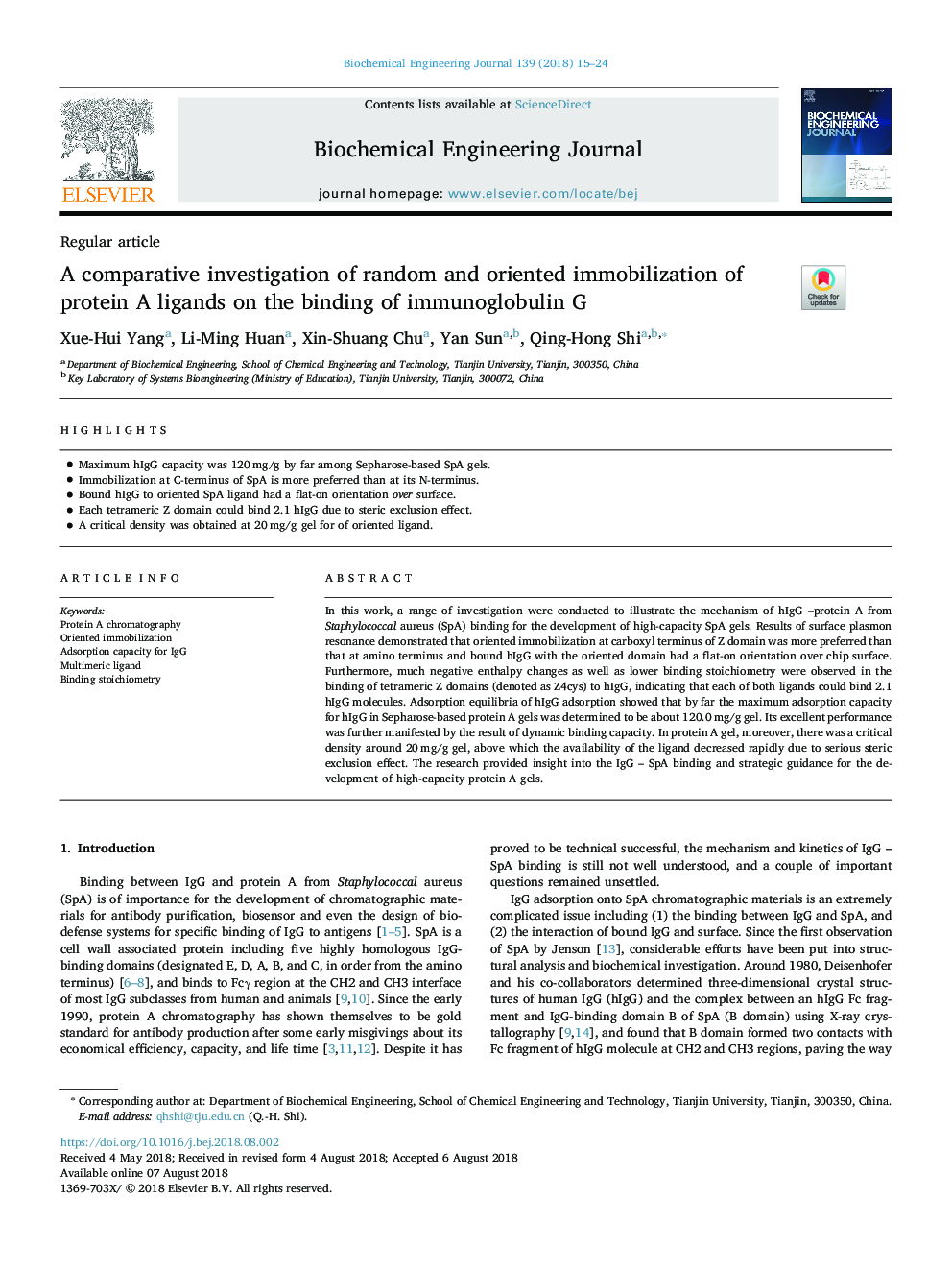| Article ID | Journal | Published Year | Pages | File Type |
|---|---|---|---|---|
| 8946463 | Biochemical Engineering Journal | 2018 | 10 Pages |
Abstract
In this work, a range of investigation were conducted to illustrate the mechanism of hIgG -protein A from Staphylococcal aureus (SpA) binding for the development of high-capacity SpA gels. Results of surface plasmon resonance demonstrated that oriented immobilization at carboxyl terminus of Z domain was more preferred than that at amino terminus and bound hIgG with the oriented domain had a flat-on orientation over chip surface. Furthermore, much negative enthalpy changes as well as lower binding stoichiometry were observed in the binding of tetrameric Z domains (denoted as Z4cys) to hIgG, indicating that each of both ligands could bind 2.1 hIgG molecules. Adsorption equilibria of hIgG adsorption showed that by far the maximum adsorption capacity for hIgG in Sepharose-based protein A gels was determined to be about 120.0âmg/g gel. Its excellent performance was further manifested by the result of dynamic binding capacity. In protein A gel, moreover, there was a critical density around 20âmg/g gel, above which the availability of the ligand decreased rapidly due to serious steric exclusion effect. The research provided insight into the IgG - SpA binding and strategic guidance for the development of high-capacity protein A gels.
Related Topics
Physical Sciences and Engineering
Chemical Engineering
Bioengineering
Authors
Xue-Hui Yang, Li-Ming Huan, Xin-Shuang Chu, Yan Sun, Qing-Hong Shi,
